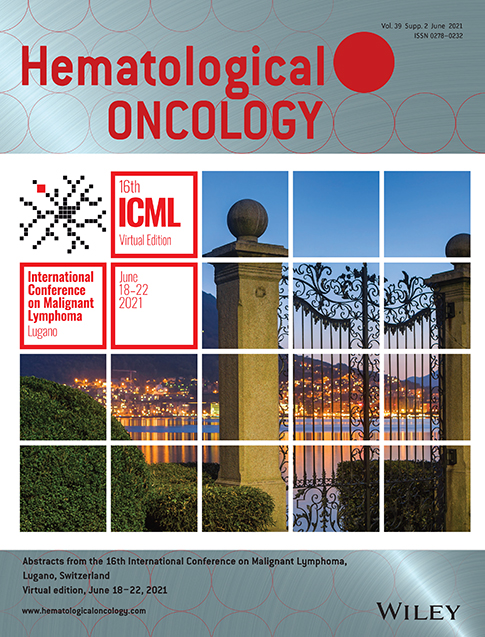RELAPSES IN INTERIM PET NEGATIVE LIMITED STAGE HODGKIN LYMPHOMA PATIENTS RECEIVING ABVD WITH OR WITHOUT RADIOTHERAPY–ANALYSIS OF EORTC/FIL/LYSA H10 AND UK NCRI RAPID TRIALS
Introduction: Randomized trials H10 and RAPID were designed to assess whether radiotherapy (RT) can be safely omitted in newly diagnosed limited-stage Hodgkin lymphoma (HL) patients who are interim PET-negative (iPETneg) after 2 (H10) or 3 (RAPID) cycles of ABVD. Despite differences in inclusion criteria and treatment, in both studies relapses were more frequent after chemotherapy only (C) than after combined modality treatment (C+RT), even in iPETneg patients. A recent exploratory analysis of the H10 study showed that most relapses after C occurred in the first 2 years after treatment (early relapses) and were observed in initially involved areas. Male sex and stage II were negative prognostic factors in H10. We sought to confirm these findings in the independent data set of the RAPID trial.
Patients and Methods: Patients enrolled in the RAPID trial were assigned retrospectively to a favorable (F) or unfavorable (U) prognostic group according to the EORTC/GELA criteria. First, the timing and site of relapses were analyzed descriptively in the F group. The low number of relapses in the U group prevented a reliable comparison with the H10 counterpart. Next, RAPID (F+U groups) was analyzed with a Cox model adjusted for age, sex and stage to estimate the treatment hazard ratio (HR) and its 95% confidence interval (CI). Finally, H10 and RAPID (F+U groups) were combined in a Cox model stratified by study, with a different HR before and after 2 years.
Results: Patient numbers, group allocation and outcomes are presented in table 1. In the RAPID F group, relapses after C occurred within 2 years in 11 patients and after that in 2; and after C+RT in 2 and 4 patients, respectively. Relapses after C occurred only in initially involved areas in 6 patients, only in uninvolved areas in 2 and in both in 5; and after C+RT, in 1, 2 and 3 patients, respectively. In RAPID (F+U groups), the effect of gender and stage went in the same direction as in H10 but was non-significant. In the combined analysis, the hazard of relapses was significantly lower after C+RT than after C during the first 2 years (HR = 0.20, 95% CI = (0.11, 0.37)) but similar from 2 years onwards (HR = 0.84, 95%CI = (0.41, 1.69)). The fitted model showed a significant prognostic effect of gender (worse prognosis for males) and stage (worse prognosis for stage II), mainly driven by H10.
Conclusions: The independent validation with RAPID and the combined analysis confirm the H10 finding that omitting RT in iPET neg. patients treated with C results in an increase in early relapses. Moreover, in both studies, relapses after C were more frequently confined to initially involved areas alone.
| F | U | Unclassified* | |||||
|---|---|---|---|---|---|---|---|
| C+RT | C | C+RT | C | C+RT | C | ||
| H10 | randomized | 227 | 238 | 292 | 302 | 0 | 0 |
| relapsed | 2 (1%) | 30 (13%) | 16 (5%) | 30 (10%) | 0 | 0 | |
| RAPID | randomized | 118 | 123 | 65 | 63 | 25 | 25 |
| relapsed | 6 (5%) | 13 (11%) | 3 (5%) | 5 (8%) | 0 | 3 (12%) | |
- * mainly due to missing ESR.
Keywords: Hodgkin lymphoma, Radiation Therapy
No conflicts of interests pertinent to the abstract.




